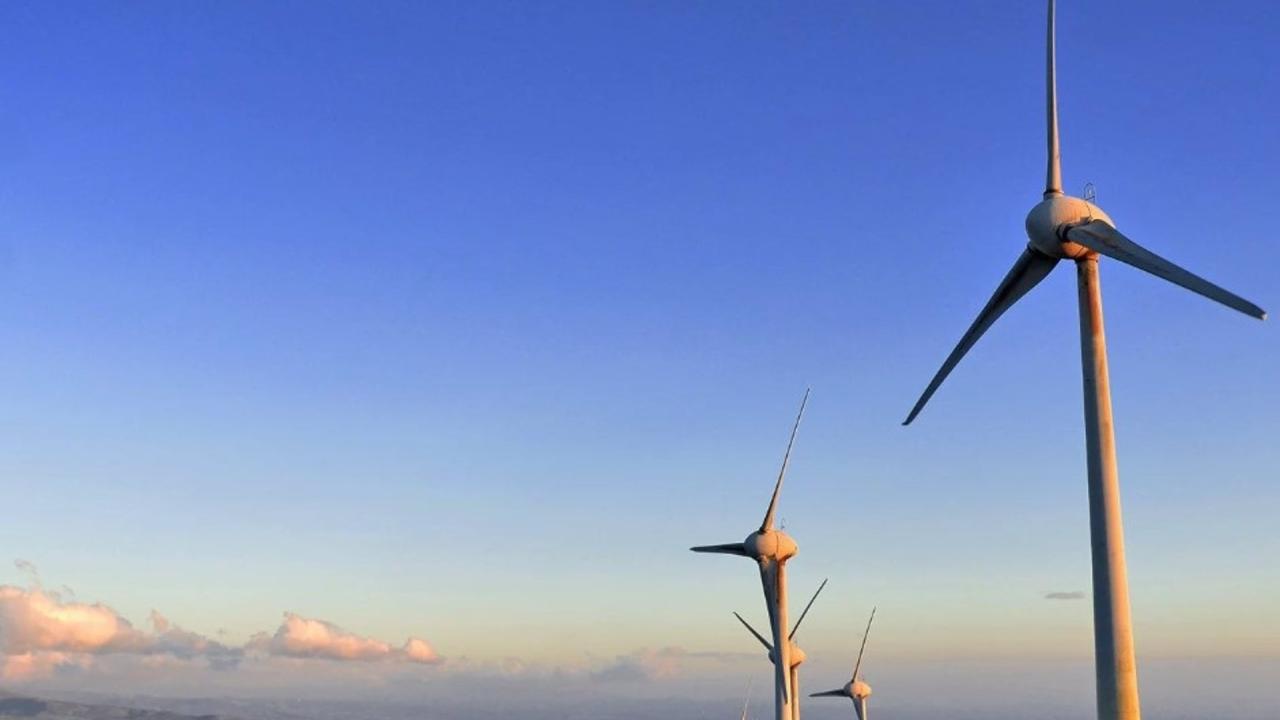
The South American country is preparing a document that points the way to assessing the environmental impact of offshore wind projects in the country, which is being promoted by the government.
Colombia is moving closer to the idea of producing energy from the wind currents that reach the Caribbean coast. If the areas planned in the Offshore Wind Energy Roadmap are taken into account, it is estimated that some 50 gigawatts (GW) could be produced. This is 2.5 times more than the entire capacity with which the country is supplied.
If built, Colombia would have the first wind farms of this type in Latin America. But building them is not an easy task. The turbines are 100 meters high and must be supported on a fixed base on the seabed or on a floating base, depending on the distance from the coast.
In Denmark, the United Kingdom and the Netherlands, such parks have already been built, but in much of the world this potential is still being explored. For this reason, we are only just beginning to understand what their impacts might be on underwater ecosystems or on the lives of communities living near the coast.
For example, a study published in 2023 in the journal Nature analyzed the influence that the construction of an offshore wind farm in California, United States, could have on the wind currents that reach the sea surface. These winds are essential for a process known as upwelling, which allows nutrients found on the seabed to rise to the surface and photosynthesize. In their analysis, the scientists found that changes in wind stress could occur, affecting that process.
In Colombia, little is known about the impact they could have. However, the possibility of building them on the Atlantic coast, Bolívar, Magdalena and La Guajira is being explored. In December, the Ministry of Mines and Energy announced that eight companies had been preliminarily authorized to participate in the first auction to build and operate offshore wind energy projects.
Now, the Ministry of Environment has published a draft of the terms of reference that companies must use to conduct Environmental Impact Studies to carry out these projects. These studies are one of the requirements that must be sent to the National Environmental Licensing Agency so that this entity can give them approval to carry out the work.
Although it is not a definitive document, experts who analyzed its content consider that there are important omissions, such as some environmental impacts that could occur during the construction of the project, or social considerations due to a possible impact on artisanal fishing.
Environmental criteria for a new industry
The document published by the Ministry of the Environment was prepared based on two documents that already existed: the terms of reference for onshore wind energy projects and those for the exploration and exploitation of offshore hydrocarbons. “It is an important effort, but there are still elements missing to make it sufficiently robust. It was built taking the terms of reference for onshore wind projects and hydrocarbon projects, which are industries that have very different impacts,” says Margarita Nieves, a lawyer and master's degree holder in Energy Law.
Nieves is the director of the Colombian Network of Researchers in Offshore Wind Energy. Together with the environmental group of the network of researchers that she leads, she analyzed the terms of reference and found several points for improvement, which are part of the comments that will be sent to the Ministry of the Environment.
First, they say that the document gives importance to impacts that would not be so relevant in this type of project. “An example is the importance given to the dumping of waste and contaminated water. This is a latent impact in the entire life cycle of hydrocarbon projects, but not so much in offshore wind projects. But four pages are dedicated to them, while less importance is given to impacts that do correspond to this type of project,” explains Nieves.
Underwater noise is one of those risks that, in her opinion, is not given enough importance. It occurs mainly during the construction phase of the project and could have an impact on the ecosystems near the area, “but only two paragraphs are devoted to it,” says Nieves.
It also warns that key impacts are omitted, such as “the night lighting that these parks require during their operation and that can also affect underwater life,” something that is not mentioned in the document.
On the other hand, the terms of reference ask companies to report different activities or areas that they encounter, such as artisanal fishing areas, vessel transit, or if it is an important area for species transit. For Johana Barney, researcher at the Institute for Development and Peace Studies (Indepaz), one of the fundamental problems is that, beyond the report, there are no “red lines.”
An example could be the seagrass and turtle transit areas in the waters north of La Guajira, where there is insufficient information on the impacts that such a project would generate. In these cases, says Barney, “the precautionary principle should prevail.”
With artisanal fishing, it is important to assess the dynamics that occur in different indigenous communities in La Guajira. “If we restrict artisanal fishing in a particular area, we cannot ask a clan to move to another area, because those waters may belong to another clan. How are we going to manage that?” asks Barney.
Nieves believes that in this regard it is important to review the experiences of other countries, taking into account their differences with Colombia. “In Denmark, for example, there are large-scale fishing associations. There is already a very large asymmetry there when compared to artisanal fishing in Colombia. But these are the experiences that need to be evaluated to know how compensation has been made when affecting this type of activities,” says the lawyer.
In addition to these impacts, the social implications of the arrival of wind farms in the sea must also be assessed.
Better environmental control
When we think of the sea, says José Vega, a researcher at the Stockholm Environment Institute (SEI), “we have the notion that it is an empty, uninhabited territory.” But a great deal of activity takes place there, from commercial and tourist transit zones to areas of cultural importance for indigenous and fishing communities.
These aspects are key in the relationship between companies and communities, which must be mediated by state authorities. Vega has investigated the social impacts of onshore wind projects in La Guajira and believes that there are several aspects to take into account in order not to repeat the mistakes that have been made there.
The first is to answer the question “how are we going to guarantee the correct representation of indigenous communities in prior consultations?” Wayuu communities usually have traditional and ancestral authorities. The traditional ones are those taken into account by the Ministry of the Interior for prior consultation processes. However, ancestral authorities know the lineage of the clans and are crucial for decision-making regarding the construction of projects.
The second aspect that Vega believes is key is access to detailed information about the projects, their capacity, the impacts they will generate and the implications they would have for the communities. Ensuring this access in a timely manner can be decisive in the social acceptance of the project at the time of its construction.
“The problem is that we have not managed to understand the Wayuu communities. We think that things can be done in this region the same as anywhere else, but that is not the case,” says Barney. For her, it is important to strengthen the capacities of national and local authorities to respond to the challenges posed by offshore projects, and to recognize the impacts before planning a project.
In the United States and Europe, Nieves explains, Strategic Environmental Impact Studies are carried out. “It is a practice in which, before offering areas for projects, the environmental authority carries out an environmental analysis and this information is used to select the areas to be offered and thereby eliminate risks.”
Regulations are also needed to establish criteria for the construction of wind farms, beyond environmental impact studies. One case that Nieves highlights is that in Colombia “there is no regulation on how far the wind farms should be from the coastline. This is particularly sensitive in tourist areas and in areas where there are human settlements on the coast because there may be a visual impact of the projects.”
Who do we produce energy for?
The construction of offshore wind projects raises a debate about the final use of the energy produced. In the projects being auctioned in Colombia, companies are free to choose where that energy will be used.
“There is interest from countries like Germany for this energy to be used to produce green hydrogen, which they would buy. We would be creating a lot of impacts, with an industry that we barely know, to bring energy to another country,” says Barney.
However, Nieves believes that Colombia's potential is great and must be exploited in a sustainable manner. “There is a potential for deployment that is more than twice the installed capacity that Colombia has at the moment. What I see is an opportunity to take advantage of energy locally, but also to export the surpluses that are generated,” he adds.
The document published by the Ministry of the Environment will be open for comments until February 12. After that, the entity must respond to the comments received and take them into account when preparing the final document, which will be published in the coming weeks.









